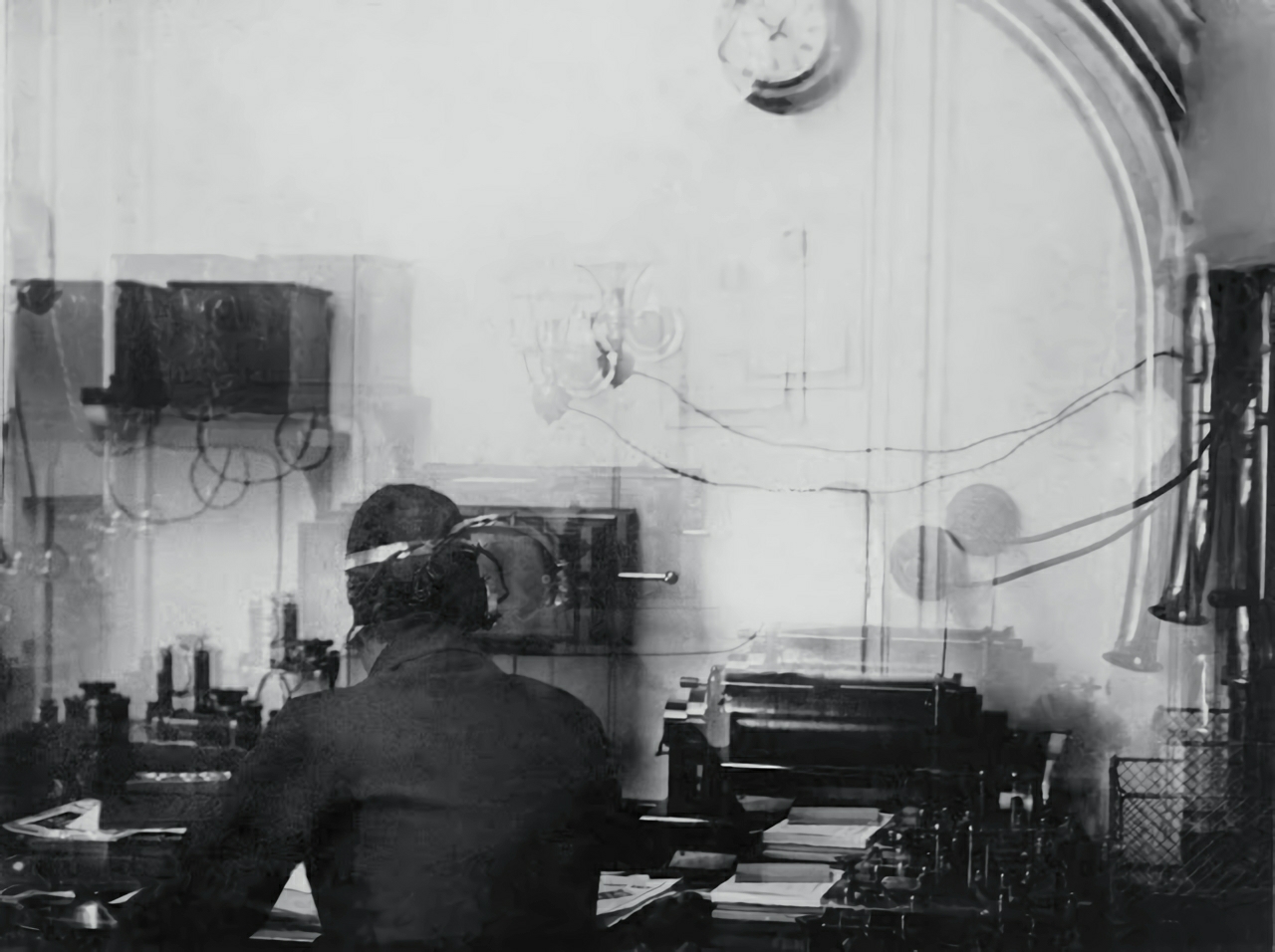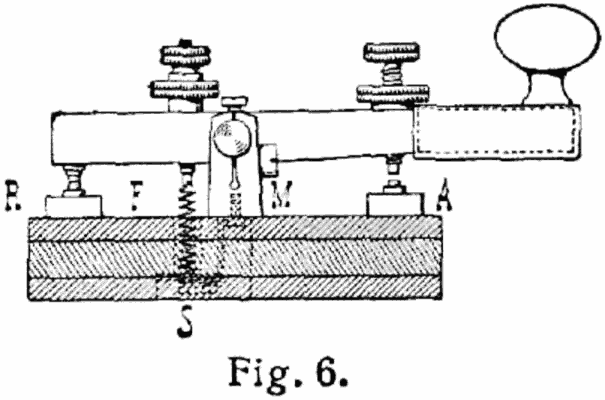|
CQD
CQD (transmitted in Morse code as ) is one of the first distress signals adopted for radio use. On 7 January 1904 the Marconi International Marine Communication Company issued "Circular 57", which specified that, for the company's installations, beginning 1 February 1904 "the call to be given by ships in distress or in any way requiring assistance shall be 'C Q D' ". Background Landline and submarine telegraphers' telegraphs had adopted the convention of using the station code " CQ" to all stations along a telegraph line. As the first wireless operators were taken from the already trained landline telegraphers, the current practices carried forward and CQ had then been adopted in maritime radiotelegraphy as a "general call" to any ship or land station. The Marconi company added a "D" ("distress") to CQ in order to create a distress call. Thus, "CQD" was understood by wireless operators to mean ''All stations: Distress''. Although used worldwide by ... [...More Info...] [...Related Items...] OR: [Wikipedia] [Google] [Baidu] |
CQ (call)
CQ is a station code used by wireless operators derived from long established telegraphic practice on undersea cables and landlines, particularly used by those communicating in Morse code, (), but also by voice operators, to make a general call (called a ''CQ call''). Transmitting the letters ''CQ'' on a particular radio frequency means that the transmission is a broadcast or "General Call" to anyone listening, and when the operator sends "K" or says "Go Ahead" it is an invitation for any licensed radio station listening on that frequency to respond. Its use on radio matched the existing use on Morse landline telegraphy and dates from the earliest wireless stations. It was widely used in point-to-point diplomatic and press services, maritime, aviation, and police services until those services eliminated Morse radiotelegraphy. It is still widely used in amateur radio which still has active use of Morse radiotelegraphy. History and usage The CQ station code was originally used by l ... [...More Info...] [...Related Items...] OR: [Wikipedia] [Google] [Baidu] |
Harold Bride
Harold Sydney Bride (11 January 1890 – 29 April 1956) was a British merchant seaman and the junior wireless operator on the ocean liner during her ill-fated maiden voyage. After the ''Titanic'' struck an iceberg at 11:40 pm 14 April 1912, Bride and his senior colleague, Jack Phillips, were responsible for relaying CQD messages to ships in the vicinity and coordinating the rescue effort which led to survivors being picked up by the . The pair remained at their posts until the ship's power was almost completely out. Bride was washed off the ship as the boat deck flooded, but managed to scramble onto the upturned lifeboat Collapsible 'B', and was rescued by ''Carpathia'' later in the morning. Despite being injured, he helped Harold Cottam, the ''Carpathia'' wireless operator and a personal friend of his, transmit survivor lists and personal messages from the ship. Early life Harold Bride was born in Nunhead, London, England, in 1890 to Arthur Bride and Mary Ann Lowe. The yo ... [...More Info...] [...Related Items...] OR: [Wikipedia] [Google] [Baidu] |
Jack Phillips (wireless Operator)
John George "Jack" Phillips (11 April 1887 – 15 April 1912) was a British sailor and the senior wireless operator aboard the ''Titanic'' during her ill-fated maiden voyage in April 1912. Before the collision with the iceberg, Phillips and his assistant, Harold Bride, had acknowledged and passed along several ice warnings to the bridge. As the ship sank, Phillips did his utmost to contact other ships for assistance and coordinated a successful rescue effort with . He did not survive the sinking and his body, if recovered, was not identified. Early life Phillips was born on 11 April 1887 in Farncombe, Surrey. The son of George Alfred Phillips, a draper and Ann Phillips (née Sanders), Phillips' family originally came from Trowbridge, Wiltshire, from a lineage of weavers, but moved to Farncombe around 1883. Phillips lived with his five siblings, of whom only two twin sisters survived to adulthood, above a draper's shop – Gammons – which his father managed in Farncombe Str ... [...More Info...] [...Related Items...] OR: [Wikipedia] [Google] [Baidu] |
Prosigns For Morse Code
Procedural signs or prosigns are shorthand signals used in Morse code telegraphy, for the purpose of simplifying and standardizing procedural protocols for landline and radio communication. The procedural signs are distinct from conventional Morse code abbreviations, which consist mainly of brevity codes that convey messages to other parties with greater speed and accuracy. However, some codes are used ''both'' as prosigns and as single letters or punctuation marks, and for those, the distinction between a prosign and abbreviation is ambiguous, even in context. Overview In the broader sense prosigns are just standardised parts of short form radio protocol, and can include any abbreviation. Examples would be for "okay, heard you, continue" or for "message, received". In a more restricted sense, "prosign" refers to something analogous to the nonprinting control characters in teleprinter and computer character sets, such as Baudot and ASCII. Different from abbreviations, those a ... [...More Info...] [...Related Items...] OR: [Wikipedia] [Google] [Baidu] |
Mayday
Mayday is an emergency procedure word used internationally as a distress signal in voice-procedure radio communications. It is used to signal a life-threatening emergency primarily by aviators and mariners, but in some countries local organizations such as firefighters, police forces, and transportation organizations also use the term. Convention requires the word be repeated three times in a row during the initial emergency declaration ("Mayday mayday mayday"). History The "mayday" procedure word was conceived as a distress call in the early 1920s by Frederick Stanley Mockford, officer-in-charge of radio at Croydon Airport, England. He had been asked to think of a word that would indicate distress and would easily be understood by all pilots and ground staff in an emergency. Since much of the air traffic at the time was between Croydon and Le Bourget Airport in Paris, he proposed the term "mayday", the phonetic equivalent of the French (a short form of , "come ndhelp me") ... [...More Info...] [...Related Items...] OR: [Wikipedia] [Google] [Baidu] |
Morse Code
Morse code is a telecommunications method which Character encoding, encodes Written language, text characters as standardized sequences of two different signal durations, called ''dots'' and ''dashes'', or ''dits'' and ''dahs''. Morse code is named after Samuel Morse, one of the early developers of the system adopted for electrical telegraphy. International Morse code encodes the 26 ISO basic Latin alphabet, basic Latin letters to , one Diacritic, accented Latin letter (), the Arabic numerals, and a small set of punctuation and procedural signals (Prosigns for Morse code, prosigns). There is no distinction between upper and lower case letters. Each Morse code symbol is formed by a sequence of ''dits'' and ''dahs''. The ''dit'' duration can vary for signal clarity and operator skill, but for any one message, once the rhythm is established, a beat (music), half-beat is the basic unit of time measurement in Morse code. The duration of a ''dah'' is three times the duration ... [...More Info...] [...Related Items...] OR: [Wikipedia] [Google] [Baidu] |
Emergency Communication
An emergency is an urgent, unexpected, and usually dangerous situation that poses an immediate risk to health, life, property, or environment and requires immediate action. Most emergencies require urgent intervention to prevent a worsening of the situation, although in some situations, mitigation may not be possible and agencies may only be able to offer palliative care for the aftermath. While some emergencies are self-evident (such as a natural disaster that threatens many lives), many smaller incidents require that an observer (or affected party) decide whether it qualifies as an emergency. The precise definition of an emergency, the agencies involved and the procedures used, vary by jurisdiction, and this is usually set by the government, whose agencies ( emergency services) are responsible for emergency planning and management. Defining an emergency An incident, to be an emergency, conforms to one or more of the following, if it: * Poses an immediate threat to life, h ... [...More Info...] [...Related Items...] OR: [Wikipedia] [Google] [Baidu] |
Amateur Radio History
The history of amateur radio, dates from the dawn of radio communications, with published instructions for building simple wireless sets appearing at the beginning of the twentieth century. Throughout its history, amateur radio enthusiasts have made significant contributions to science, engineering, industry, and social services. Research by amateur radio operators has founded new industries, built economies, empowered nations, and saved lives in times of emergency. Beginnings Amateur radio came into being after radio waves (proved to exist by Heinrich Rudolf Hertz in 1888) were adapted into a communication system in the 1890s by the Italian inventor Guglielmo Marconi. In the late 19th century there had been amateur ''wired'' telegraphers setting up their own interconnected telegraphic systems. Following Marconi's success many people began experimenting with this new form of "wireless telegraphy". Information on "Hertzian wave" based wireless telegraphy systems (the name "radio" ... [...More Info...] [...Related Items...] OR: [Wikipedia] [Google] [Baidu] |
Global Maritime Distress And Safety System
The Global Maritime Distress and Safety System (GMDSS) is a worldwide system for automated emergency signal communication for ships at sea developed by the United Nations' International Maritime Organization (IMO) as part of the SOLAS Convention. It is a set of safety procedures, types of equipment, and communication protocols used for safety and rescue operations of the distressed ships, boats, and aircraft. It is supplemental to the International Convention on Maritime Search and Rescue (ICMSaR) adopted in 1979 and provides basis for the communication. GMDSS consists of several systems which are intended to perform the following functions: alerting (including position determination of the ship in distress) ships in the vicinity and ashore authorities, search and rescue coordination, locating (homing), maritime safety information broadcasts, general communications, and bridge-to-bridge communications. Specific radio carriage requirements depend upon the ship's area of operati ... [...More Info...] [...Related Items...] OR: [Wikipedia] [Google] [Baidu] |
2182 KHz
2182 kHz is a radio frequency designed exclusively for distress calls and related calling operations – Mostly historical information for dates prior to February 2009. in the maritime service. It is equivalent to a wavelength of 137.4 metres. Transmission modes Transmissions on 2182 kHz commonly use single-sideband modulation (SSB) (upper sideband only). However, amplitude modulation (AM) and some variants such as vestigial sideband are still in use, mainly by vessels with older equipment and by some coastal stations in an attempt to ensure compatibility with older and less sophisticated receivers. : Range 2182 kHz is analogous to channel 16 on the marine VHF band, but unlike VHF which is limited to ranges of about depending on antenna height, communications on 2182 kHz and nearby frequencies have a reliable range of around during the day and or sometimes more at night. The reception range of even a well-equipped station can be severel ... [...More Info...] [...Related Items...] OR: [Wikipedia] [Google] [Baidu] |
500 KHz
From early in the 20th century, the radio frequency of 500 kilohertz (500 kHz) was an international calling and distress frequency for Morse code maritime communication. For much of its early history, this frequency was referred to by its equivalent wavelength, 600 meters, or, using the earlier frequency unit name, 500 kilocycles (per second) or 500 kc. Maritime authorities of many nations, including the Maritime and Coastguard Agency and the United States Coast Guard, once maintained 24 hour watches on this frequency, staffed by skilled radio operators. Many SOS calls and medical emergencies at sea were handled via this frequency. However, as the use of Morse code over radio is now obsolete in commercial shipping, 500 kHz is obsolete as a Morse distress frequency. Beginning in the late 1990s, most nations ended monitoring of transmissions on 500 kHz and emergency traffic on 500 kHz has been replaced by the Global Maritime Dist ... [...More Info...] [...Related Items...] OR: [Wikipedia] [Google] [Baidu] |




